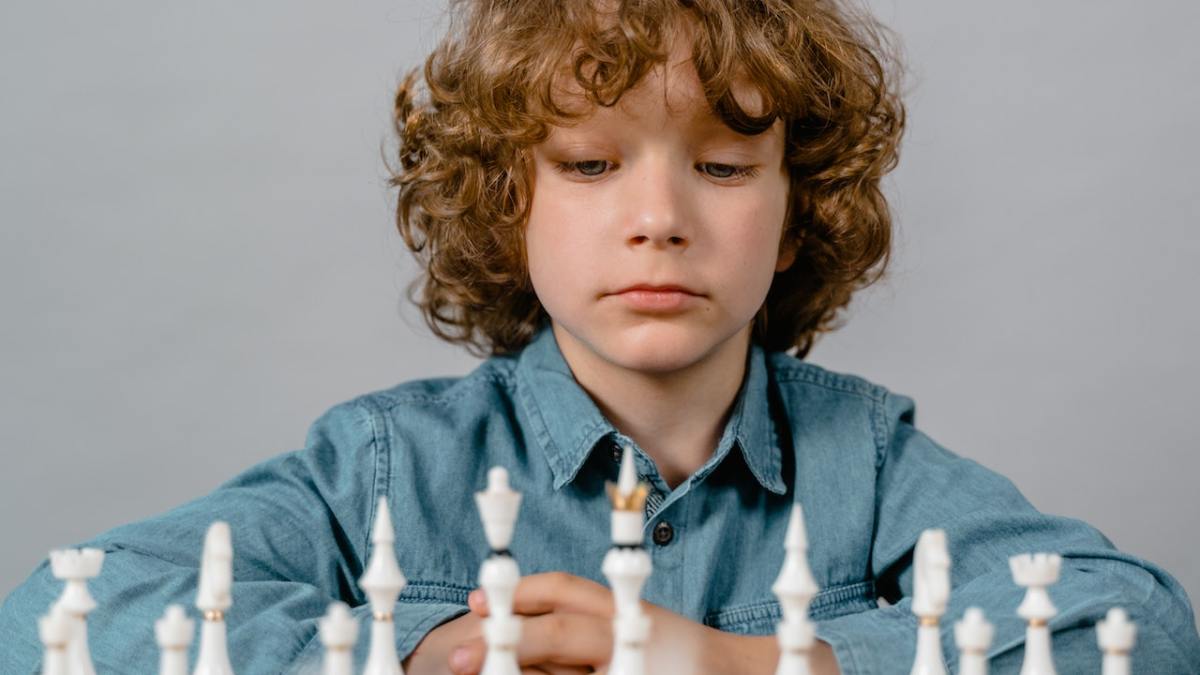From our earliest moments, mindfulness practices can become early habits that help boost happiness and reduce anxiety, as habits formed early in life determine behaviors in adulthood.
Mindfulness is a skill that a child needs to become more focused on reality, and more aware of his body, his environment, and his feelings in all circumstances, according to Corel Canoe in her book, "A Parent's Guide to Everything Related to Emotional Intelligence in Children."
Vigilance is an innate quality that a person possesses, and it is not something that should be manufactured, but we are required to find and develop it, "to get used to mental focus on what we are doing, and what is happening around us, rather than detachment from reality."
As for the child's mental alertness, it "enhances his ability to be present, aware of his whereabouts and what he is doing, and is not immersed in responding to what is happening around him, and gives him focus on the present, controlling feelings and thoughts."
The more insight our children have into their inner experience, "the more they will be able to make appropriate choices," says psychotherapist and mental empowerment coach Shonda Morales.
Although "meditation" may help develop mindfulness, its practice is not essential for a child. "A child can be mentally alert while walking, eating, or even while having a conversation," says Canoe.
When we teach kids about mindfulness, we give them the tools they need to build confidence (Pixels)
Benefits of mindfulness for children
According to Dr. Christopher Willard, psychiatrist and author of dozens of books in the field, “When we teach children about mindfulness, we give them the tools they need to build confidence, develop a positive outlook for dealing with stress, and facing difficult situations. their mental alertness as they mature.
Willard explains that teaching mindfulness to children may help them acquire 3 basic problem-solving skills and build positive social relationships, namely:
Pay attention and remember information.
The ability to move between tasks.
Act appropriately with others.
In addition, mindfulness makes the child more calm, as one study indicates that children under 3 years old "become better at regulating their emotions and behaviors, and children who participated in the study who were worse at self-regulation showed more improvement than non-participants."
Studies also indicate that the benefits of mindfulness for children include:
Increased focus,
reduced symptoms of ADHD, improved self-control, lower levels of stress and depression, anxiety and aggressive behaviour, insight and awareness.
Unleashing curiosity
, and dealing with appropriate warmth and kindness, which is supported by mindfulness education expert Danielle Mahoney, saying that "children who received mindfulness training showed an increased sense of curiosity, questioning their thoughts and emotions, and they enjoyed better communication and coping skills."
Improving educational performance
, stimulating innovation that leads to effective and flexible options to face seemingly intractable problems, and the ability to resolve conflicts.
Author Anaka Harris, who teaches children mindfulness, asserts that this skill "can help them deal with any difficulties they may encounter in life."
Mental alertness is a skill that helps a child deal with any difficulties he may face in life (Pixels)
4 ways to teach your child mindfulness
Kanoy recommends choosing a starting point from which to start acquiring the child's mental alertness skill, provided it suits his interests and temperament, and making sure to take into account his likes and dislikes. "The introverted child may benefit from an internal activity, and the extroverted child may prefer an external activity."
Here are 4 suggestions for making that happen, based on the recommendations of Canoe and the experts:
Noticing things near it, by
sitting together, placing food and things in front of you, looking at something and describing it out loud, or drawing it, or writing its name or description on a piece of paper.
Or going out for a walk together, pointing at a particular flower, car, or building from multiple angles, keeping in mind "adjusting our gait to the child's pace, and letting him get ahead of the way," says Shonda Morales.
Observing the environment around him
, by sitting together outside the house, drawing the child’s attention to the stars and describing them to him, and “using a telescope if one is available,” according to Canoe’s recommendation.
Or go to the park, sit on a bench, and leave him to watch the movement of people and things in front of him for 5-10 minutes, then choose a bird, cat, or dog, and urge the child to follow his movement, and avoid self-descriptions, such as saying “Look, cute bird,” and suffice with descriptions Objectivity, such as "Look, the bird is catching a worm."
Get to know its body functions,
Morales says.
Or, having a snack together, demonstrating the use of the senses while eating, "such as enjoying the first bites, paying close attention to appearance, smell, feel and taste", and describing the sensations that ensue.
Or lying on the floor side by side to train the child to breathe from the abdomen, by taking a deep inhale with one hand placed on the chest and the other on the abdomen, filling the abdomen like a balloon, before exhaling, letting the balloon deflate, and observing the child how his stomach rises and falls, describing his feeling of that .
And practice self-calming in front of him, by saying, “I feel tired right now, I need to take some deep breaths” before the breathing exercise, then saying, “I feel calm now.”
Regulating thoughts and feelings
"is an advanced skill that takes slow and slow," says Canoe, and can start from very early childhood (when children are newborns).
And it relies on getting them as they grow to talk to themselves and about themselves, to “help them reach their goals” by describing feelings to them, by saying, “You seem nervous about X”, or “How do you feel now?”, or “I feel so warm and happy when we play together abroad,” and so on, according to Morales.

